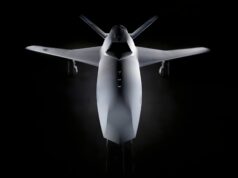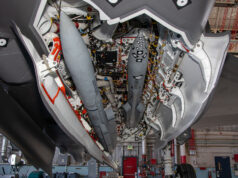Raytheon and the U.S. Air Force have announced what they describe as the longest known AMRAAM air-to-air missile shot by a fifth-generation fighter, following a series of tests at Eglin Air Force Base.
The trials, carried out in late 2024 using an F-22 Raptor, demonstrated what the company called “extended time of flight capability.”
According to Raytheon, the event showed the missile could deliver greater reach and lethality when paired with modern fighters.
The work forms part of the U.S. Air Force’s form, fit, function refresh (F3R) programme, intended to extend the missile’s life and performance, alongside Raytheon’s own investment in research and development.
Sam Deneke, president of Air & Space Defense Systems at Raytheon, said in a statement: “AMRAAM is already known as the gold standard for the air dominance arena, and these tests prove it will continue to play a critical role for the U.S. and its allies for decades to come.”
AMRAAM has been in service for over three decades and is integrated on 14 platforms across 43 countries. The company notes the missile has completed more than 6,000 live firings and has seen combat use with a high success rate.
While Raytheon announced the record-breaking nature of the shot, no range figures have been released. The U.S. Air Force has not disclosed whether further testing of the extended-range capability is planned.














AMRAAM “ gold standard” my hairy arse it is that would be a certain UK/European missile called Meteor.. AMRAAM is solid silver standard.
Also getting an air to missile to coast a bit further by the transfer of more kinetic energy from the launch platform is a bit chocolate teapot in reality the only thing that really tells you what is what is it’s no escape firing envelope.
You have to ask how much energy did it have at this range, i.e. what was the target and how was it flying, would it have had enough energy to intercept a manoeuvring target? There’s no context behind the statement.
Price of gold must be too high. Integrated onto a grand total of 3 platforms since inception.
That or the US does not like to integrate competition onto its aircraft..F35 being the classic.
Probably knicked the engine out of a Meteor they had on exchange.